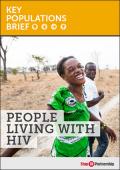Publications - Released in 2016
While HIV-induced immuno-suppression makes people living with HIV (PLHIV) extremely vulnerable to TB, stigma, absence of precise point-of-care diagnostics, and poor integration of TB and HIV services make TB particularly deadly for this population. Along with stigma, other factors such as gender, poverty and malnutrition promote delays in diagnosis, present barriers to treatment, and impact patients’ adherence to medications.
On the policy side, delay in the implementation of WHO recommendations, staff shortages and inefficient distribution of staff, along with poor collaboration between vertical TB and HIV systems, also delay delivery of urgent care to PLHIV with TB. Political will and collaborative efforts involving civil society organizations are an obvious necessity in order to achieve the ambitious goals to end both HIV and TB.
Downloads
Organizations
- Stop TB Partnership






